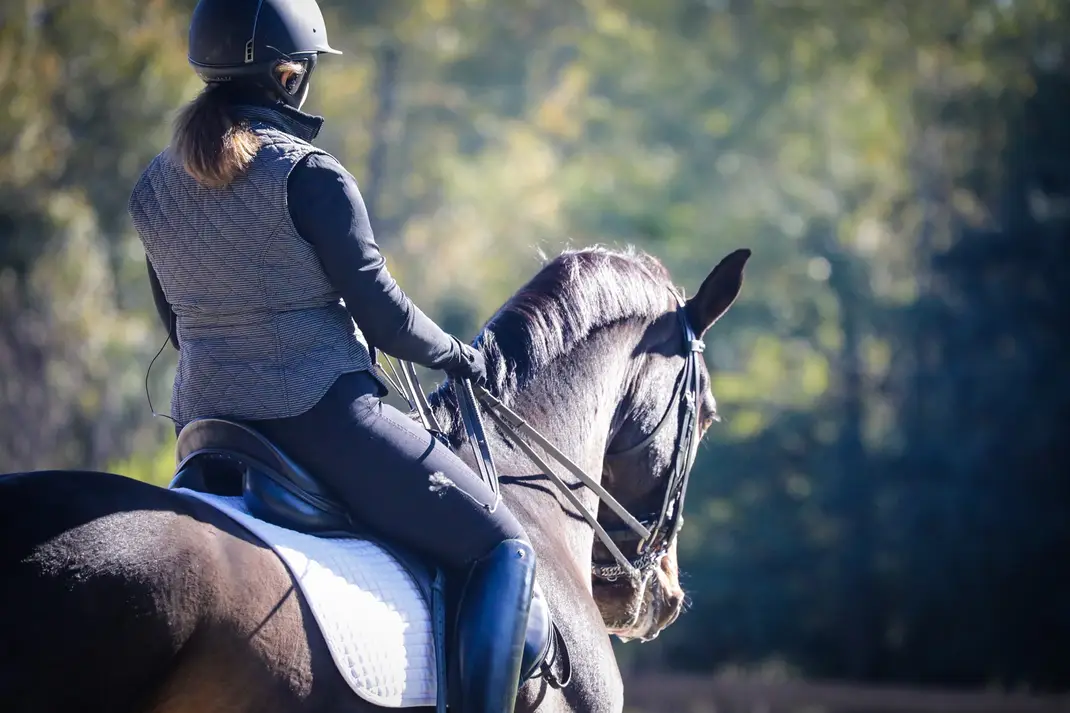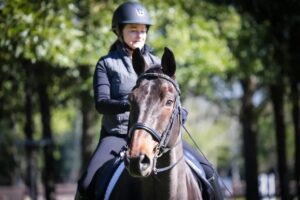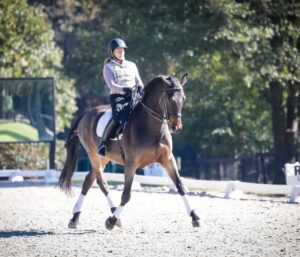Mastering the movements for classical dressage requires a deep understanding of both the technical aspects of each movement and the partnership between horse and rider. Classical dressage focuses on the harmonious development of the horse’s natural abilities through a system of progressive training. Here is a guide to mastering the key movements, building from foundational exercises to advanced ones:
- Developing the Basics: The Training Scale
Before diving into specific movements, it’s essential to understand the classical dressage Training Scale, which is a progression of principles that guide the horse’s training: - Rhythm: The horse must move with a regular and consistent beat.
- Relaxation: The horse should be loose, supple, and tension-free.
- Contact: The horse should accept the bit and move into the rider’s hand with soft, steady contact.
- Impulsion: Develop forward energy and activity, particularly from the hindquarters.
- Straightness: The horse must be aligned with the rider’s aids and move equally well on both sides.
- Collection: The horse carries more weight on its hindquarters, lifting the forehand and becoming more balanced.
- Foundation Movements
Mastery of basic movements is essential before progressing to more advanced exercises. These lay the groundwork for all higher-level classical dressage movements. - Transitions
— Master the transitions: Perfecting transitions between and within gaits (e.g., from walk to trot, or collected trot to extended trot) teaches the horse balance, engagement, and responsiveness.
— Focus on smoothness and precision: The horse should maintain its rhythm and balance throughout the transition. For upward transitions, focus on impulsion from the hindquarters. For downward transitions, use half-halts and core engagement to maintain balance. - Circles
— 20-meter, 15-meter, and 10-meter circles: These exercises teach the horse suppleness and balance while allowing you to work on contact and bend.
— Focus on correct bend: The horse’s body should follow the curve of the circle, with the inside hind leg stepping under toward the center of gravity.
— Maintain rhythm and relaxation: Keep the horse relaxed and in rhythm throughout the circle to prevent tension or stiffness. - Leg Yield
— How it works: The horse moves forward and sideways at the same time, crossing its legs while maintaining slight flexion away from the direction of travel.
— Purpose: This movement improves suppleness, straightness, and lateral obedience.
— How to master it: Ask for the leg yield from the walk and trot. Keep the horse moving forward while maintaining a steady contact and subtle inside leg pressure to encourage the crossing over of the legs. - Lateral Movements
Lateral movements are essential for developing straightness, suppleness, and engagement. These movements require the horse to bend and engage its hindquarters while moving sideways. - Shoulder-In
— How it works: The horse moves forward with the inside foreleg and inside hind leg on separate tracks, while maintaining a slight inside bend.
— Purpose: Shoulder-in helps develop suppleness, engagement of the hindquarters, and balance.
— How to master it: Start on a straight line, with the horse in a slight inside bend. Ask the horse to step forward and sideways by applying inside leg at the girth, while maintaining a soft inside rein and supporting with the outside rein. - Travers (Haunches-In)
— How it works: The horse bends around the inside leg with the haunches moving inward on a different track than the shoulders, while the forehand remains straight.
— Purpose: This movement engages the horse’s inside hind leg and increases collection and lateral flexibility.
— How to master it: Maintain the bend from the shoulder-in, but now ask the horse to bring its haunches to the inside by using the outside leg slightly behind the girth. Keep the horse’s forehand on the track while the hindquarters move inward. - Half-Pass
— How it works: The horse moves forward and sideways with a clear bend in the direction of travel, unlike the leg yield.
— Purpose: The half-pass develops engagement, suppleness, and collection.
— How to master it: Start by mastering travers and shoulder-in. From travers, ask for more forward motion while maintaining the sideways direction and bend. Begin practicing in trot and work up to performing half-pass in canter. - Collected Movements
Collection is key in classical dressage and is required for performing more advanced movements. These exercises increase the horse’s strength, balance, and ability to carry more weight on its hindquarters. - Collected Trot and Canter
— How it works: The horse’s stride becomes shorter and more elevated while maintaining energy and impulsion.
— Purpose: Collection improves balance and lightens the forehand, preparing the horse for more advanced movements.
— How to master it: Use half-halts to balance the horse and encourage it to engage its hindquarters. Gradually ask the horse to shorten its stride while maintaining forward energy and balance. - Pirouette (Canter)
— How it works: The horse performs a 360-degree turn on the haunches, with the inside hind leg acting as a pivot while the outside hind leg steps around.
— Purpose: The pirouette develops extreme collection, balance, and precision.
— How to master it: Start by practicing canter-walk transitions and simple turns on the haunches at walk. Gradually work up to asking for more collection in the canter before introducing the turning aids for the pirouette. Maintain balance and rhythm throughout the movement. - Advanced Movements
Once the horse is confirmed in lateral movements and collection, it can begin to learn the more advanced classical dressage movements that require high levels of engagement, balance, and responsiveness. - Piaffe
— How it works: The horse trots in place, engaging its hindquarters deeply while maintaining elevation and impulsion.
— Purpose: The piaffe develops extreme engagement, lightness on the forehand, and precision in the aids.
— How to master it: Start with collected trot and work on half-steps to introduce the concept of shorter, elevated strides. Use clear, precise aids from the rider’s legs and seat to encourage the horse to engage deeply while remaining forward in energy, even though the horse stays mostly on the spot. - Passage
— How it works: The passage is a highly collected, elevated trot with distinct suspension between each step.
— Purpose: It develops balance, engagement, and expression.
— How to master it: Develop from the collected trot, focusing on half-halts to bring the horse into a more elevated, suspended movement. Maintain rhythm, balance, and engagement. - Flying Changes and Tempi Changes
— How it works: The horse changes leads at the canter, either in single changes or multiple tempi changes (e.g., every stride, every second stride).
— Purpose: This develops straightness, precision, and engagement, especially in more collected gaits.
— How to master it: Start with single flying changes, ensuring the horse stays balanced and straight during the change. Progress to performing multiple changes (tempi) by keeping the rhythm and timing precise. - Practice and Progression
— Gradual progression: Don’t rush the process. Work on developing the horse’s strength, suppleness, and balance progressively.
— Consistent practice: Regular, correct practice is key to mastering these movements. Work with a skilled trainer to ensure that both you and your horse are progressing correctly.
— Patience and precision: Classical dressage is about finesse. Focus on small improvements and refining each movement to perfection over time.
Mastering classical dressage movements requires patience, precise communication, and a strong partnership with your horse. Developing these movements progressively, with an emphasis on the dressage training scale, will result in harmony, balance, and elegance that define classical dressage at its finest.




